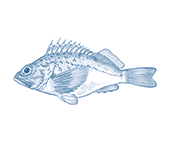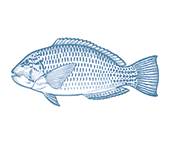




- Eat Less
Wild Caught
Region:
QLD
- Mud crab are caught using trap and pot fishing methods which are highly targeted and have a low impact on habitats.
- The fishery operates in tidal waters in the Gulf of Carpentaria to the New South Wales border.
- Mud crab populations are at sustainable levels but there are some concerns around the quality of information available on catches and whether they are being effectively restrained.
- The commercial catch has declined in recent years while fishing effort has remained high.
- The trap and pot fishing methods used likely have a low impact on threatened and endangered marine wildlife, though the fishery operates in areas that overlap with the habitat of species like dugongs, turtles and speartooth sharks and there have been reports of entanglements.
- The reporting of accidental catches of vulnerable species has been inadequate and it is likely under-reporting occured.
- A recently-introduced harvest strategy will improve management.





Mud crabs are highly regarded as eating crabs, a favourite for a table centrepiece whether steamed, stir-fried, or cooked in a curry or sauce. Crabs can be purchased whole (cooked or raw) or as picked and frozen meat. To cook whole crabs, crack any large legs or claws with the back of a knife and then steam, boil or stir-fry. Alternatively, crabs can be broken into equal sized pieces and dropped into a soup, stew or curry. Crabs are cooked when the shell goes a vivid orange or red colour and meat pulls away from the shell with ease. Cooked and picked crabmeat can be tossed through a simple pasta or noodle dish, or used for a seafood cocktail, salad or sandwich.
- Mud Crab Fishery (579t in 2021, 655t in 2020)
The Giant Mud Crab is found in tropical and sub-tropical coastal regions in the Indo-West Pacific. It is the most widespread mud crab species ranging from South Africa to Tahiti. In Australia the species is found from Shark Bay in WA to Port Hacking, south of Sydney. Commercial fisheries operate in QLD, NSW, WA and the NT.
QLD mud crab populations appear to be at sustainable levels and on a rebuilding trajectory, although these findings are uncertain due to unreliable reporting until the recent past.
New management arrangements following fishery reforms are welcome and contains elements that represent international best practice. But declining trends across the last decade should not be ignored. The permitted level of catch recommended for the fishery is higher than recent commercial catches and so is not likely to restrain fishing pressure.
Environmental and climate factors like rainfall, river flow and sea temperatures can affect mud crab fisheries significantly. An Australian study estimated 30-70% variability in commercial catches could be explained by these factors.
Bycatch reporting in the fishery has been inadequate, with the abandonment of an independent observer program in 2012. The new harvest strategy will require reliable bycatch reporting.
Marine parks provide significant protection for mud crab stocks along the Queensland east coast but are largely absent from the Gulf. The prohibition on the take of female crabs also helps to protect the stock.
Since the last AMCS assessment in 2018, the fishery has undergone a series of welcome reforms as part of the Queensland Sustainable Fisheries Strategy 2017-2027. Its lack of a harvest strategy and breach of a condition relating to data led to the fishery losing its ability to export internationally in 2021. While the harvest strategy now exists, it remains in breach of another important condition (to improve information collection relating to impacts on protected species) at the time of this assessment.


